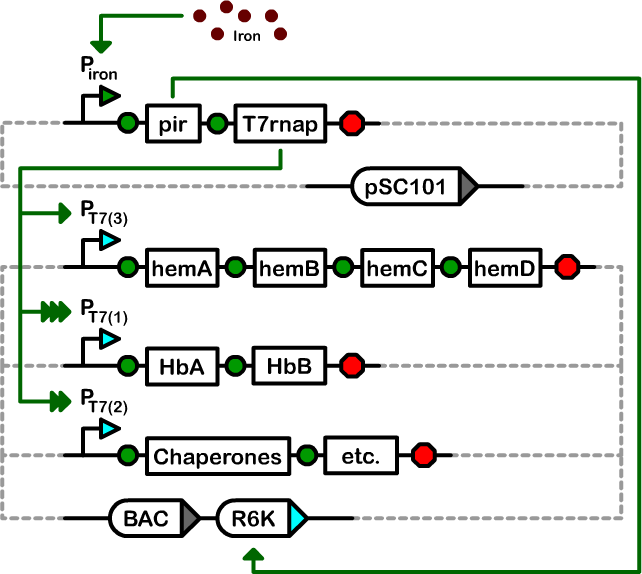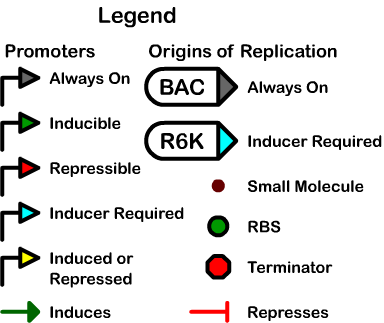BerkiGEM2007Present3
From 2007.igem.org
(→The Controller) |
|||
| Line 25: | Line 25: | ||
'''Results and Data''' | '''Results and Data''' | ||
| - | [ Add Results and Data Here ] | + | [[Image:072007_yfbEgraph.jpg]] |
| + | <br> | ||
| + | '''[[072007_neg | White Cell Negative]]''' | ||
| + | |||
| + | [ Add Results and More Data Here ] | ||
<!-- As these incredibly awesome figures and charts clearly demonstrate, our system works ridiculously well, with 42 orders of magnitude of dynamic range (approximately). --> | <!-- As these incredibly awesome figures and charts clearly demonstrate, our system works ridiculously well, with 42 orders of magnitude of dynamic range (approximately). --> | ||
Revision as of 09:41, 21 September 2007
The Controller
The Controller is an integrated genetic circuit, comprised of two plasmids, that directs the initiation and production of the primary systems proteins through its component operons.
Introduction
As with many synthetic biology applications, we wished to be able to control the production of the proteins involved in our system, control the relative amounts of protein produced, and have a large dynamic range between the off and on states of our system. Therefore, we designed our system to accomplish these goals, by enabling the activation of the system through an Iron Promoter and placing our genes under the control of the T7 RNA Polymerase, with T7 promoters of varying strengths. In addition, we placed the primary genes on an Amplifiable BAC, to enable even more dynamic range.
The Two-Plasmid Pir/T7 System
Our controller system is composed of two plasmids: a pSC101 Controller Plasmid, and an Amplifiable BAC.
The pSC101 Controller Plasmid contains both the Self-Destruct Device, as well as the controller operon: The genes pir and the T7 RNA Polymerase under the control of an Iron Promoter. The pir gene activates the R6K origin, which causes the plasmid containing it to jump to high copy - the R6K origin is silent without pir. The T7 RNA Polymerase transcribes genes under the control of T7 Promoters, and will vary with strength depending on the variant of T7 Promoter. The T7 Promoters are silent without the T7 RNA Polymerase, and have a high level of transcription when active.
The Amplifiable BAC contains all the primary systems production genes, and two origins of replication. It contains both the BAC origin and the R6K origin, and so is single-copy when pir is absent, and high-copy when pir is active. Additionally, the BAC contains all the systems production genes, such as Hemoglobin, Heme (A to D), and the necessary chaperones, reductases, etc. Each of these operons is under the control of a custom T7 Promoter variant, tuned to produce the relative amount of protein desired for each operon. For example, the heme genes are under a weak T7 Promoter, as the heme genes naturally produce a large amount, where not too much is needed. However, the Hemoglobin operon is under a strong T7 Promoter, as we want a large amount of Hemoglobin present to effectively carry oxygen.
Results and Data
[ Add Results and More Data Here ]


